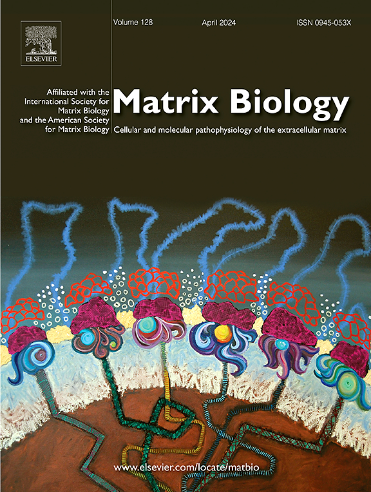Basement membrane structure and function: Relating biology to mechanics
IF 4.8
1区 生物学
Q1 BIOCHEMISTRY & MOLECULAR BIOLOGY
引用次数: 0
Abstract
Basement membranes are key mediators of many biological processes such as epithelial morphogenesis, kidney filtration, and muscle function among others. Basement membranes provide structural support to tissues so understanding their mechanical properties is important for determining how they contribute to tissue form and function. Further, basement membranes are altered in many diseases including cancer, diabetes, and fibrosis, and these changes may contribute to disease pathogenesis and progression. Understanding how basement membrane mechanics integrate with tissue function is the work of both biologists and engineers/material scientists, yet these disciplines have very different foundations. This review discusses basement membrane macromolecular structure with a view to illuminate how this structure confers basement membranes with unique mechanical properties adapted to resisting physiological stresses. The pathological implications of altered basement membrane mechanics are discussed in the context of different diseases. Additionally, we survey methods used to measure basement membrane mechanical properties, including atomic force microscopy, tensile stiffness assays, and non-quantitative assays such as cell bursting, assessing their strengths and limitations and their accessibility for different types of in vivo studies. We focus on explaining and illuminating the complexities of basement membrane material properties for biologists, and explaining the biological aspects for engineers, with the goal of making interdisciplinary science more accessible to experimentalists and readers.
基膜结构与功能:生物学与力学的关系。
基底膜是许多生物过程的关键介质,如上皮形态发生、肾脏过滤和肌肉功能等。基底膜为组织提供结构支持,因此了解其力学特性对于确定它们如何影响组织形态和功能非常重要。此外,基底膜在许多疾病中发生改变,包括癌症、糖尿病和纤维化,这些改变可能有助于疾病的发病和进展。了解基底膜力学如何与组织功能相结合是生物学家和工程师/材料科学家的工作,然而这些学科有非常不同的基础。本文讨论了基底膜的大分子结构,以阐明这种结构如何赋予基底膜以适应生理应力的独特力学性能。在不同疾病的背景下讨论了基底膜力学改变的病理意义。此外,我们调查了用于测量基底膜力学性能的方法,包括原子力显微镜、拉伸刚度分析和非定量分析(如细胞破裂),评估了它们的优势和局限性,以及它们在不同类型体内研究中的可及性。我们专注于为生物学家解释和阐明基底膜材料特性的复杂性,并为工程师解释生物学方面的问题,目的是使实验家和读者更容易理解跨学科科学。
本文章由计算机程序翻译,如有差异,请以英文原文为准。
求助全文
约1分钟内获得全文
求助全文
来源期刊

Matrix Biology
生物-生化与分子生物学
CiteScore
11.40
自引率
4.30%
发文量
77
审稿时长
45 days
期刊介绍:
Matrix Biology (established in 1980 as Collagen and Related Research) is a cutting-edge journal that is devoted to publishing the latest results in matrix biology research. We welcome articles that reside at the nexus of understanding the cellular and molecular pathophysiology of the extracellular matrix. Matrix Biology focusses on solving elusive questions, opening new avenues of thought and discovery, and challenging longstanding biological paradigms.
 求助内容:
求助内容: 应助结果提醒方式:
应助结果提醒方式:


